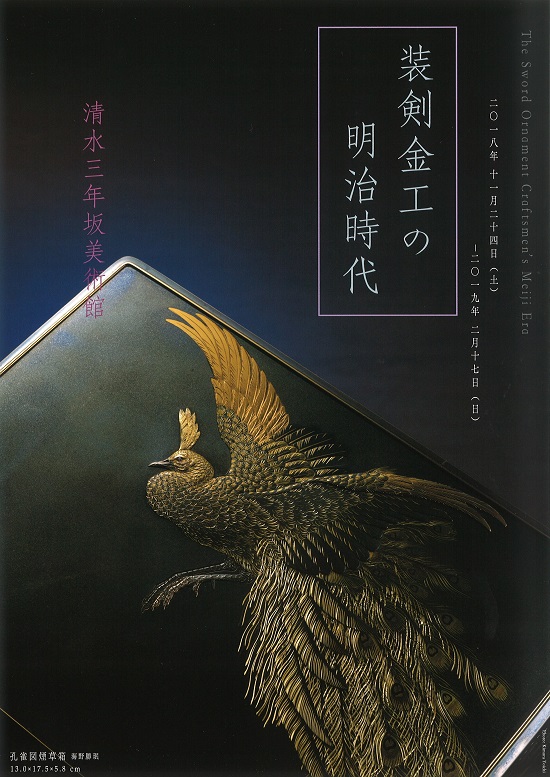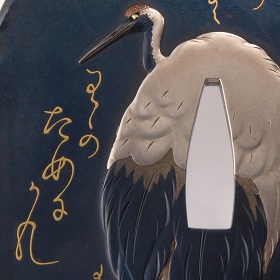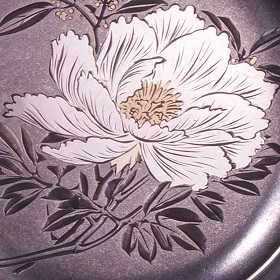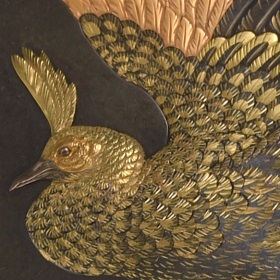
The Sword Ornament Craftsmen’s Meiji Era
In the relative peace of the Edo period, the decorative quality of sword fittings such as sword guards, sword mountings, kozuka (a small knife fitted to the scabbard) and kogai (a small hair-styling spatula fitted to the scabbard) developed considerably, leading to the emergence of many superb sword ornament craftsmen. Various subjects such as the beauties of nature, historical legends, and the aubingers of good luck were skillfully depicted in metal of iron, gold, silver, shibuichi, and alloy copper and gold using sophiticated metal carving techniques.
The feudal government, however, fell with the coming of the Meiji era, and these highly skilled craftsmen lost their livelihoods as demand for their services disappeared because of legislation passed in Meiji 9 (1876) restricting the wearing of swords.
Under the new government’s policy of encouraging new industries, they attempted something new by producing interior decorations in the form of vases, incense burners, and personal adornments that made full use of sword-fitting metal-carving skills. Such sophisticated engraving techniques on a varied array of metals were unprecedented, and Japanese metal artworks acquired high value in international expositions and soon became important exports.
In addition, a domestic revival of interest in the traditional arts gradually blossomed, resulting in Meiji 22 (1889) in the Tokyo Art School’s creation of a metal-carving course. Kano Natsuo(1828-1898), a sword ornament craftsman, was appointed professor and the following year chosen a member as well of the newly created Imperial Household Artists, and Unno Shomin (1844−1915)and others followed in subsequent years.
This exhibit presents sword fittings by Shoami Katsuyoshi(1832−1908), Tsukada Shukyo(1848−1918) and others, and metal artworks of the Meiji and Taisho era, as well as works by Kano Natsuo and Unno Shomin, who became representative metal artists of the Meiji era after experiencing a period of hardship. We hope that you appreciate these sophisticated masterpieces, which were born of an ongoing quest for learning in the face of various obstacles.
 2026-01-07 / 2018-11-24
2026-01-07 / 2018-11-24 

